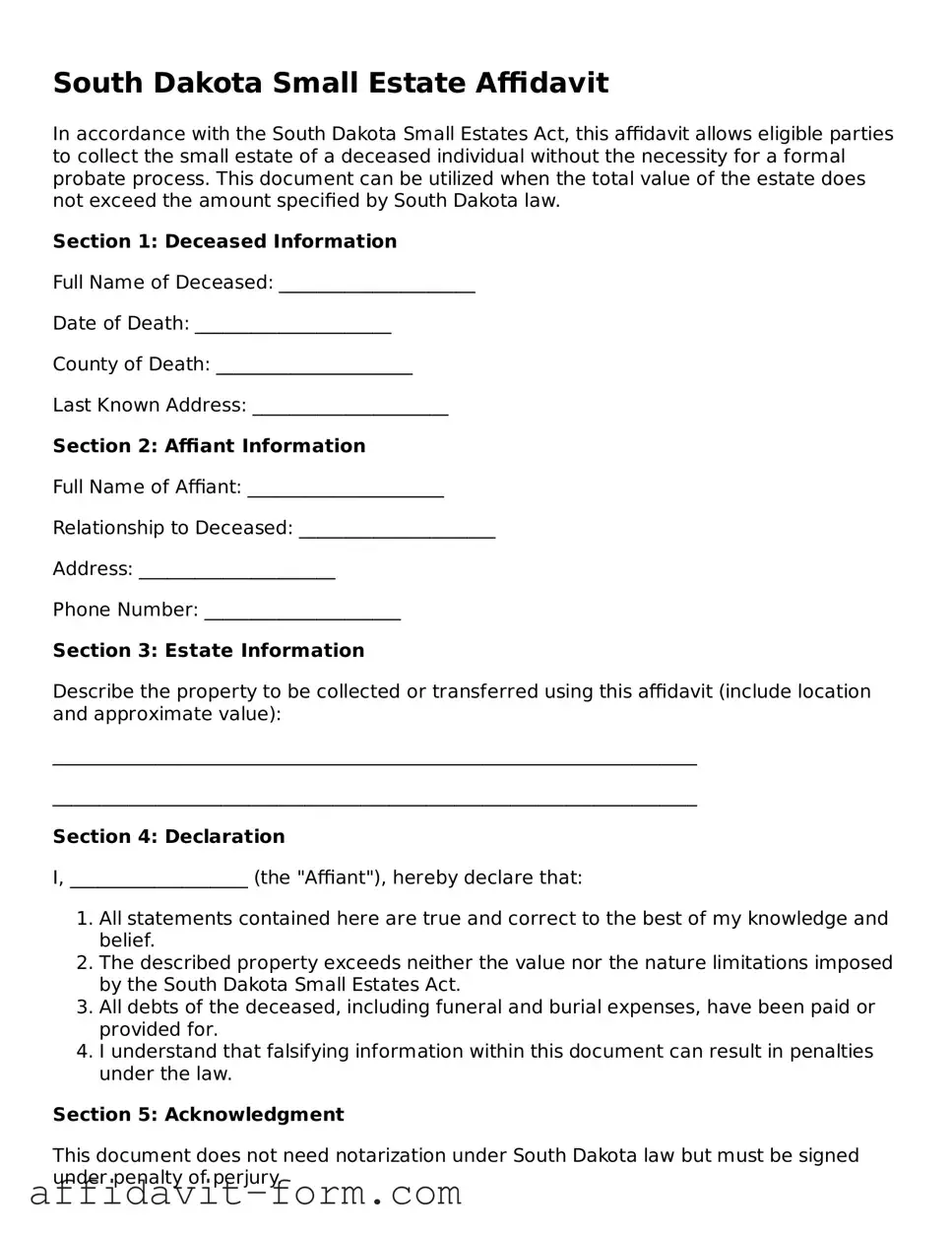South Dakota Small Estate Affidavit
In accordance with the South Dakota Small Estates Act, this affidavit allows eligible parties to collect the small estate of a deceased individual without the necessity for a formal probate process. This document can be utilized when the total value of the estate does not exceed the amount specified by South Dakota law.
Section 1: Deceased Information
Full Name of Deceased: _____________________
Date of Death: _____________________
County of Death: _____________________
Last Known Address: _____________________
Section 2: Affiant Information
Full Name of Affiant: _____________________
Relationship to Deceased: _____________________
Address: _____________________
Phone Number: _____________________
Section 3: Estate Information
Describe the property to be collected or transferred using this affidavit (include location and approximate value):
_____________________________________________________________________
_____________________________________________________________________
Section 4: Declaration
I, ___________________ (the "Affiant"), hereby declare that:
- All statements contained here are true and correct to the best of my knowledge and belief.
- The described property exceeds neither the value nor the nature limitations imposed by the South Dakota Small Estates Act.
- All debts of the deceased, including funeral and burial expenses, have been paid or provided for.
- I understand that falsifying information within this document can result in penalties under the law.
Section 5: Acknowledgment
This document does not need notarization under South Dakota law but must be signed under penalty of perjury.
Signature of Affiant: _____________________
Date: _____________________
Printed Name of Affiant: _____________________
